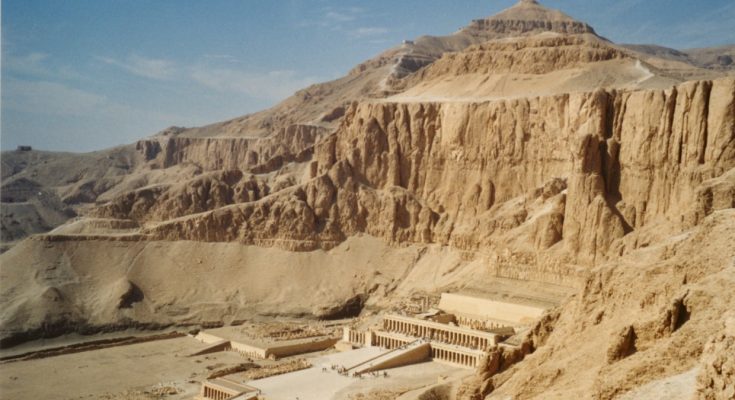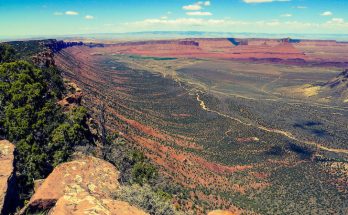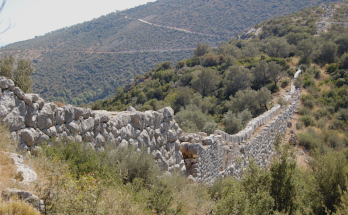Hatshepsut’s Mortuary Temple
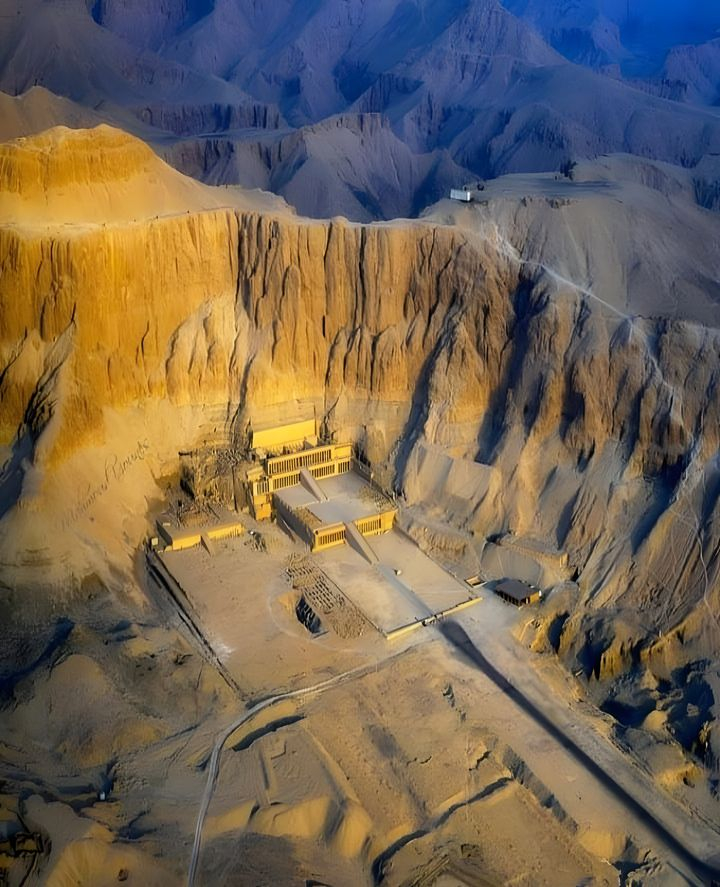
The Mortuary Temple of Hatshepsut is one of the most beautiful of all of the temples of Ancient Egypt. It is located at Deir el-Bahri (“the Northern Monastery”), at the head of the valley beneath the peak of the mountain (and natural pyramid) “Dehent” (now known by its Arabic name, el-Qurn – “The Horn”). Hatshepsut’s temple was named “Djeser-djeseru” (“holy of holies”).
It sits directly against the rock which forms a natural amphitheatre, so that the temple seems to grow from the living rock. The design of the temple echoes that of its neighbour, the Mortuary Temple of Montuhotep. There is also a mortuary temple dedicated to Thuthmosis III and a number of Ptolemaic burials in the vicinity. Apparently, there used to be a mud brick temple dedicated to Amenhotep I and Queen Ahmose Nefertari, but it was destroyed to make way for Hatshepsut’s temple.
Hatshepsut is an intriguing character. She initially ruled as regent for her step-son Thuthmosis III but promoted herself to the role of pharaoh instead of passing power to him when he came of age.
Her temple is one of the most striking monuments in Ancient Egypt even in its semi-ruined state. It was designed by Senenmut (who according to some ancient and modern commentators was her lover) as a “garden for her father” (Amun) and exotic trees and shrubs from Punt (possibly Somalia) were planted in the lower courtyard. However, after her death, Thuthmosis III and Akhenaten both intentionally damaged the monument. The former directed his attacks at Hatshepsut herself, either replacing her image with his own or simply obliterating references to her, the latter damaged her temple because of the frequent references to the god Amun.
She was omitted from the Kings lists of Ramesses II and Seti I, but Ramesses II and Merneptah both made additions to her temple. During the Ptolemaic Period the temple was repaired in places. Some repairs to the temple reveal that they apparently thought it was dedicated to Imhotep and Amenhotep son of Hap. Some time later, a Christian Monastery was built upon the ruins which covered much of the original temple.

A one hundred and twenty foot wide causeway lined with trees and sphinx led from the valley to the entrance pylons. Unfortunately, no trace remains of the pylons and the two obelisk that would have stood in front of them are no longer in place. The temple was built on three levels with two wide ramps in a central position joining the levels together.
First Level
There was a garden in the first courtyard in which exotic trees and shrubs from Hathsepsut’s trading expedition to Punt were planted. There is now no evidence of this garden, but it must have been beautiful.
Behind the courtyard there was a colonnade with square pillars behind which there were many reliefs. Most of the depictions have been destroyed and none of those that remain feature Hatshepsut herself. The remaining decorations include Tuthmosis III dancing before the god Min, scenes depicting the marshes of Lower Egypt and the quarrying and transportation of two large obelisks down the Nile (these obelisks found a home in the temple of Karnak).
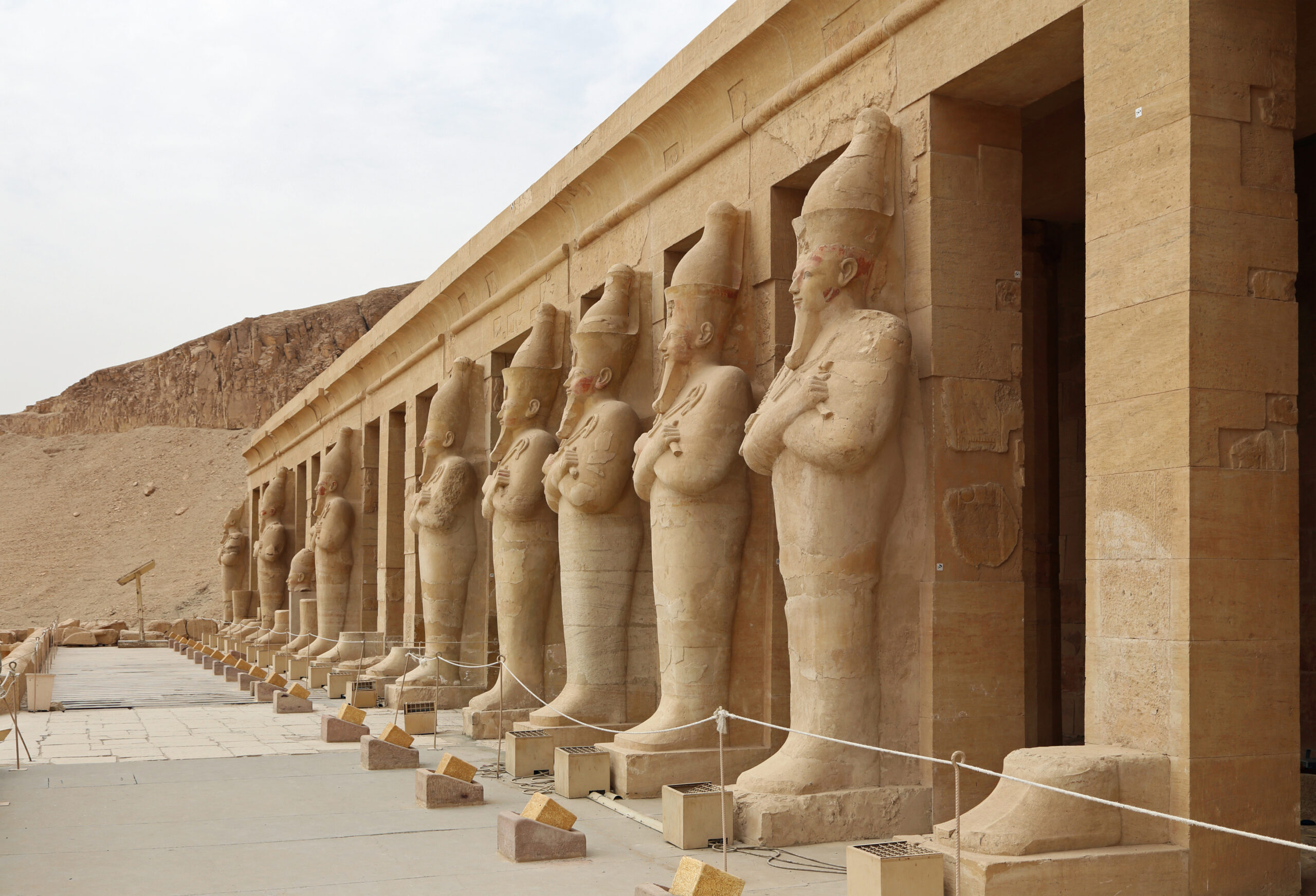
Second Level
A wide ramp runs from the centre of the first courtyard to the second level. Two statues of crouching lions flank the entrance to the ramp. Behind the wide terrace there is a colonnade with two rows of square columns on each side of the ramp leading to the third level.
Birth Colonnade
The birth colonnade is on the right hand side of the ramp to the third level. The decorations (which are repeated on the walls of the temple at Karnak) depict Hatshepsut’s divine birth. There has been significant damage caused both to the images of Hatshepsut (by Thuthmosis III) and to those of Amun (who was targeted by Akhenaten who sought to erase Amun and promote the Aten).

First Level
There was a garden in the first courtyard in which exotic trees and shrubs from Hathsepsut’s trading expedition to Punt were planted. There is now no evidence of this garden, but it must have been beautiful.
Behind the courtyard there was a colonnade with square pillars behind which there were many reliefs. Most of the depictions have been destroyed and none of those that remain feature Hatshepsut herself. The remaining decorations include Tuthmosis III dancing before the god Min, scenes depicting the marshes of Lower Egypt and the quarrying and transportation of two large obelisks down the Nile (these obelisks found a home in the temple of Karnak).

Second Level
A wide ramp runs from the centre of the first courtyard to the second level. Two statues of crouching lions flank the entrance to the ramp. Behind the wide terrace there is a colonnade with two rows of square columns on each side of the ramp leading to the third level.
Birth Colonnade
The birth colonnade is on the right hand side of the ramp to the third level. The decorations (which are repeated on the walls of the temple at Karnak) depict Hatshepsut’s divine birth. There has been significant damage caused both to the images of Hatshepsut (by Thuthmosis III) and to those of Amun (who was targeted by Akhenaten who sought to erase Amun and promote the Aten).
